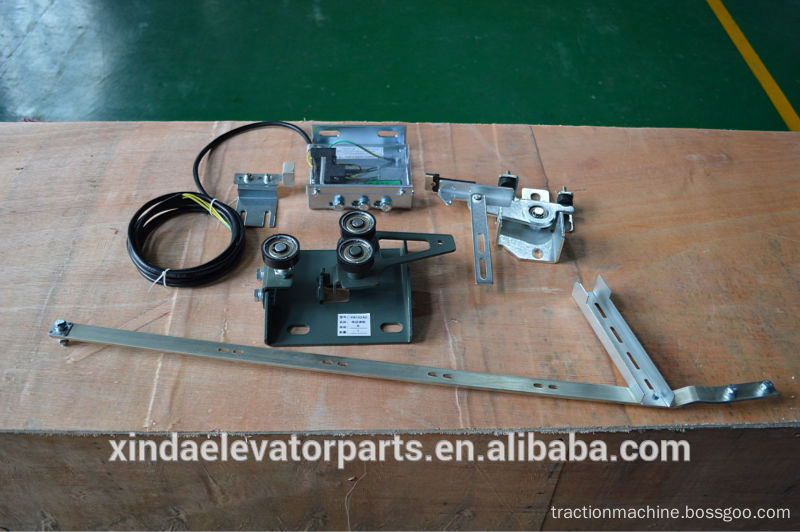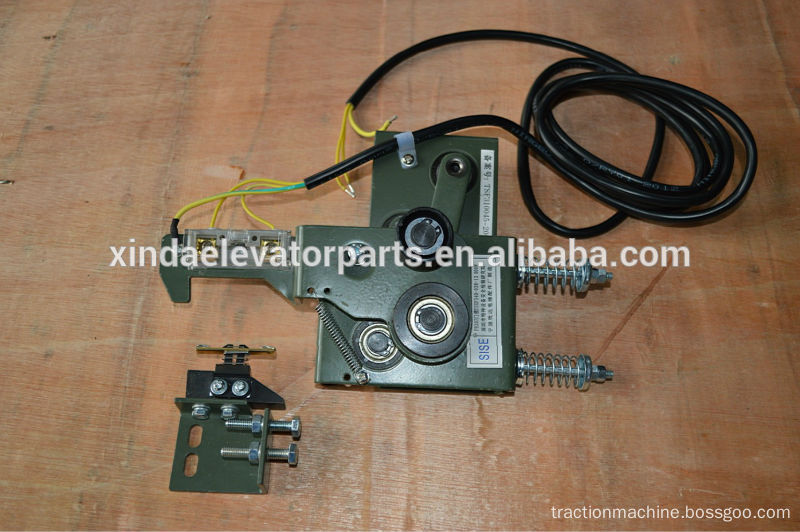The Wulonggou gold deposit is located on the northern slope of East Kunlun, including three major gold deposits, 22 gold deposits, 14 gold-bearing alteration zones and 78 gold deposits. It is a tectonic altered rock type gold sand. bed. The natural types of ore can be divided into three types: oxidized ore, mixed ore, and primary ore. The surface oxidized ore has been developed and utilized by heap leaching. However, a large number of deep primary minerals are difficult to recover gold due to harmful elements such as carbon, arsenic and antimony . Gold and sulfide ores are closely related, mainly fine-grained microstructure inferior race are hosted by pyrite and arsenopyrite in the ore high carbon content, which made it difficult to gold flotation. Therefore, through the process test of the primary ore of the Wulonggou gold deposit, including the process mineralogical research and the experimental research of various conventional mineral processing methods, it is finally determined that the flotation-flotation tailings are re-elected and the gold concentrate produced is reprocessed. Process flow.
First, the material composition of the ore
(1) The chemical composition of the ore
A number of chemical analyses were performed on the ore, and the solubility of arsenic, carbon, and gold was analyzed. The analysis results are shown in Tables 1, 2, 3, and 4.
Table 1 Results of chemical multiple analysis

Table 2 Phase analysis results

Table 3 Carbon phase analysis results

Table 4 Gold Solubility Analysis Results

(2) Mineral components
Native gold ore minerals, metallic minerals pyrite 4% of a precious metal. About ore, arsenopyrite about 1.3%, about 1% graphite, stibnite about 0.2%, followed by a sphalerite, titanium ore, marcasite, pyrrhotite, yellow copper ore, tetrahedrite, limonite, galena. Non-metallic minerals are quartz, sericite, muscovite small amount of carbonate.
(3) Structural structure of the ore
The ore structure mainly has granular, semi-self-shaped and self-shaped structure, and the ore structure is dominated by disseminated structure. Pyrite, arsenopyrite, and graphite are finely granulated and flake-likely dispersed in the gangue matrix to form a disseminated structure, and a vein-like structure is partially visible.
(4) Characteristics and embedding characteristics of major gold minerals
Pyrite: mostly self-shaped, semi-self-shaped granular, with a particle size of 0.005mm~1.132mm scattered in the gangue.
Graphite: It is mostly scaly and flake-shaped, with a particle size of 0.003×0.014mm~0.103×0.823rmn, which is unevenly dispersed in the gangue.
The stibnite is mostly fine and irregular in granular shape, and the particle size is unevenly distributed in the gangue from 0.010 ngn to 0.031 rmn.
Aromatic sand: It is mostly self-shaped and semi-self-shaped, and its particle size is scattered in the gangue from 0.005mm to 0.305mm.
Natural gold: Natural gold is the most important gold mineral in ore. In 24 light films and 21 sanding sheets, 25 natural golds are seen, which are mostly angular, irregular and flaky. The maximum particle size is 0.0396×0.1332 mm, and the minimum particle size is 0.0007×0.0036 mm.
(5) The state of occurrence of gold
Microscopically, the form of gold minerals is mainly natural gold, which is embedded in various morphologies and micro-cracks. The gold embedded in the gangue accounted for 89.48% of the visible gold; the gold distributed in the micro-cracks of the gangue accounted for 10.52% of the visible gold. Gold, which accounts for 57% of the total gold content of the ore, is distributed in pyrite and arsenopyrite in the form of invisible gold under the microscope; about 21% of the gold is distributed in the form of inclusions in silicate minerals; 12% of gold is distributed in minerals such as carbonates and limonite; cyanide leaching gold accounts for about 10% of total gold.
Second, mineral processing test research
(1) Flotation exploration test
The main metal minerals in the ore are pyrite and arsenopyrite. The gold is mainly distributed in pyrite, arsenopyrite and silicate minerals with fine particles and submicroscopic fine particles. Cyanide leaching gold only accounts for total gold. About 10%, at the same time, the ore contains carbon, arsenic, antimony and other elements that are harmful to cyanide leaching, and some of the gold-containing sulphide particles are small, which brings great difficulties to the gold smelting. In order to make rational use of the ore. Select a reasonable process, carry out the conventional leaching and flotation smelting test. The test process is shown in Figure 1. The test results are shown in Tables 5 and 6. The above test results show that the + conventional cyanidation process is not suitable for treating the ore. The use of flotation to obtain gold concentrate, gold concentrate reprocessing method is more reasonable. For this test, the experimental process of ore flotation-flotation gold concentrate oxidizing roasting-slag leaching was carried out.

Figure 1 Flotation exploration test process
Table 5 results of conventional leaching test

Table 6 Flotation exploration test results

(2) Flotation closed circuit test
On the basis of a large number of test results, a closed circuit test was carried out in order to examine different grinding fineness
Next, the impact of the return of the medium mine on the selection index, the closed circuit carried out the grinding fineness -0.076mm72.35% and 87.18% two processes of the test, the test process is shown in Figure 2, the results are shown in Table 7.
Grinding fineness -0.076mm87.18% flow as above.
The closed-circuit test results show that under the condition of grinding fineness -0.076mm72.35%, a good index of gold concentrate gold grade 66.44g / t and recovery rate of 79.48% is obtained.

Figure 2 Flotation closed circuit test process
Table 7 Closed circuit test results

(III) Flotation tailings selection test
From the results of the flotation closed-circuit test, the gold content in the tailings is as high as 1.45 g/t. How to recover this part of gold, the particle size analysis of the distribution of gold in the flotation tailings and the investigation of pyrite, arsenopyrite and gold monomer dissociation. The results are shown in Table 8.
Table 8 Results of flotation tailings particle size analysis and monomer dissociation

The distribution of gold is: one monomer of natural gold is found in the +0.074mm particle size. It is semi-self-shaped granular with a particle size of 0.0036mmx0.0054mm. The natural gold of the two monomers was found in the -0.019+0.010 mm particle size. The particle size was 0.0144 x 0.0396 mm and 0.0054 x 0.0072 mm. A single monomeric natural gold was found in the tailings artificially washed heavy sand with a particle size of 0.0396×0.1332 mm.
From the particle size analysis and the dissociation of sulfide and gold, it is seen that the sulfide fractions such as pyrite and arsenopyrite in the flotation tailings are in the form of a continuous body of gangue, mainly in the presence of fine-grained monomers. In addition to the submicroscopic fine particles wrapped in pyrite and arsenopyrite, gold is also present as coarse-grained, fine-grained monomeric gold. In the tailings, the coarse-grained sulfide and the gangue of the continuous body and the coarse-grained natural gold are more difficult to recover by flotation, and the re-election can better recover this part of the gold. For this purpose, a shaker re-election test for flotation tailings was carried out, and the test results are shown in Table 9.
Table 9 Flotation tailings re-election test results

The results in Table 9 show that the flotation tailings shaker is re-elected to enrich the coarse-grained natural gold and coarse-grained sulfides and gangues. In the production, the re-elected concentrate can be returned to the ball mill and then ground, and then processed into flotation.
Third, the conclusion
The ore belongs to the ore containing carbon, arsenic, sulfur and antimony. The gold in the ore is mainly present in the form of invisible gold under the microscope in the sulfides such as pyrite and arsenopyrite, and some gold exists in the form of coarse and fine natural gold. At the same time, the ore contains a large number of easily muddy sericite, which makes gold difficult to select and smelt.
The test was finalized using a flotation-(tailing) re-election process. Flotation obtained a gold concentrate with a gold content of 66.44I and a recovery rate of 79.48%. The re-election obtained a gold grade of 22.88 g/t, and the recovery rate accounted for 5.26% of the ore. The combined indicators of the two concentrates are: gold grade 58.17g / t, recovery rate 84.74%. The use of a floating one-weight process can increase the recovery rate of gold to 84.74%, which provides an effective way for rational use of resources and improvement of mine economic benefits.
product
- ADD03011 door machine controller for door operator Panasonic
- M0000046 Aluminum wheel for landing door device elevator door roller
- PB307C door lock for door machine/operator door lock elevator part
- PB307B door lock for door machine/operator door lock elevator part
- TNG-012 photo-electronic switch for door machine elevator door parts
- Complete PB152A door lock for landing door device door lock elevator parts
Specifications
- Made of Iron
- Safety part
- For landing door device


Elevator Door Lock, Elevator Door Key, Elevator Door Operator, Elevator Door Lock Mechanism, Elevator Door Opening
Ningbo Xinda Elevator Traction Technology Co., Ltd. , https://www.xinda-elevator.com